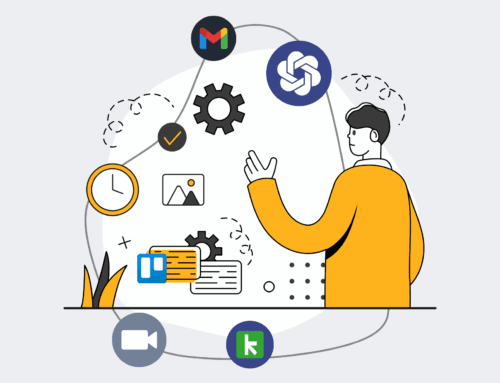How Global Talent Solutions Revolutionized Retention with 4Spot Consulting’s Predictive HR Analytics
Client Overview
Global Talent Solutions (GTS) is a publicly traded, multinational technology conglomerate headquartered in Silicon Valley, with a workforce exceeding 75,000 employees spread across more than 40 countries. A true titan in the software and cloud computing sectors, GTS is renowned for its cutting-edge innovations in AI, machine learning, and enterprise solutions. The company prides itself on fostering a culture of excellence and attracting top-tier talent from around the globe. Its highly skilled workforce, comprising engineers, data scientists, product managers, and sales professionals, is the engine of its relentless innovation and market leadership. Despite its formidable standing, GTS faced an escalating challenge that threatened its operational stability and long-term growth: persistent and costly employee attrition, particularly among its high-performing and critical-skill employees. The competitive landscape for tech talent meant that every lost individual represented not just a financial drain but also a potential erosion of institutional knowledge and project continuity.
GTS operates in a fiercely competitive industry where the demand for specialized technical skills far outstrips supply. This environment made talent retention not just an HR issue, but a strategic business imperative. The company understood that sustaining its competitive edge hinged on its ability to retain its most valuable assets—its people. Their existing HR systems, while robust for administrative tasks, lacked the sophisticated analytical capabilities needed to preemptively identify attrition risks and understand the underlying drivers. This reactive approach meant that by the time an employee signaled their intent to leave, it was often too late to intervene effectively. The cost associated with recruitment, onboarding, and training new hires was astronomical, further exacerbating the impact of high turnover rates. GTS recognized the urgent need for a more proactive, data-driven strategy to safeguard its talent pool and ensure its continued leadership in the global tech arena.
The Challenge
Prior to engaging 4Spot Consulting, Global Talent Solutions was grappling with a significant and multifaceted challenge: a steadily increasing attrition rate, especially pronounced among its critical-skill and high-potential employees. This trend was manifesting in several alarming ways. Firstly, the direct financial cost was staggering, estimated at tens of millions of dollars annually due to recruitment fees, onboarding expenses, and reduced productivity during vacancy periods. Beyond the tangible costs, there was a profound loss of institutional knowledge, project momentum, and team cohesion. When a seasoned engineer or a key project manager departed, it often resulted in project delays, quality control issues, and a palpable dip in team morale. The competitive nature of the tech industry meant that departing talent often moved to direct competitors, potentially transferring valuable insights and expertise.
GTS’s existing HR infrastructure, while comprehensive for transactional purposes, was largely reactive. Data was siloed across various systems – HRIS, performance management platforms, compensation tools, and engagement surveys – making it exceedingly difficult to gain a holistic view of employee sentiment, performance, and risk factors. HR business partners and team leaders were primarily relying on anecdotal evidence, annual engagement surveys, and exit interviews to understand the reasons behind attrition. This backward-looking approach meant that interventions were almost always too late. They lacked the ability to predict which employees were at risk of leaving, why they might leave, and what specific interventions could be most effective. This lack of predictive capability resulted in a cycle of reactive firefighting, leading to burn-out among HR teams and frustration among line managers who felt disempowered to address retention proactively. The company recognized that without a strategic, data-driven approach, their talent drain would continue to undermine their innovation capacity and market position.
Our Solution
4Spot Consulting partnered with Global Talent Solutions to implement a comprehensive, AI-powered Predictive HR Analytics solution designed to transform their reactive attrition management into a proactive, strategic talent retention strategy. Our solution was meticulously crafted to address GTS’s specific challenges by leveraging advanced data science and machine learning techniques. The core of our approach was to integrate disparate HR data sources, identify key drivers of attrition, and develop highly accurate predictive models to forecast individual flight risk.
Our solution comprised several key components:
- Unified Data Platform: We began by creating a centralized data repository, integrating information from GTS’s HRIS, performance management system, compensation and benefits platforms, learning and development records, engagement survey results, and even anonymized internal communications data (where permissible and ethical). This unified view provided an unprecedented holistic perspective on the employee lifecycle.
- Advanced Predictive Modeling: Utilizing a combination of machine learning algorithms, including Random Forests, Gradient Boosting Machines, and Neural Networks, we developed custom predictive models. These models were trained on historical data to identify complex patterns and correlations between various employee attributes, behaviors, and their likelihood of attrition. Key predictors included compensation satisfaction, manager effectiveness scores, promotion velocity, tenure, training participation, and engagement levels.
- Risk Scoring & Segmentation: The models generated individual “flight risk” scores for each employee, categorizing them into risk tiers (e.g., high, medium, low). This allowed GTS to focus their retention efforts on those most likely to depart, optimizing resource allocation. Employees were also segmented based on their risk factors, enabling highly personalized intervention strategies.
- Root Cause Analysis & Driver Identification: Beyond just predicting who might leave, our solution delved into the “why.” The models identified the primary drivers of attrition across different employee segments and departments, whether it was compensation dissatisfaction, lack of career growth opportunities, manager issues, or work-life balance concerns. This actionable insight empowered GTS to address systemic issues, not just individual symptoms.
- Intuitive Dashboards & Reporting: We designed user-friendly dashboards tailored for HR leaders, HR Business Partners, and line managers. These dashboards provided real-time insights into overall attrition trends, risk hot spots, key drivers, and the impact of retention initiatives. They offered drill-down capabilities, allowing users to explore data at a granular level while maintaining employee privacy.
- Proactive Intervention Framework: Our engagement extended beyond technology. We collaborated with GTS’s HR and leadership teams to develop a structured framework for proactive interventions. This included guidelines for personalized career development plans, targeted compensation adjustments, mentorship programs, leadership training for managers, and wellness initiatives, all informed by the analytics.
By shifting from reactive post-mortem analysis to proactive, data-driven prediction and prevention, 4Spot Consulting enabled Global Talent Solutions to fundamentally change how they managed talent retention, transforming it from a cost center into a strategic competitive advantage.
Implementation Steps
The successful implementation of 4Spot Consulting’s Predictive HR Analytics solution at Global Talent Solutions followed a meticulously planned, multi-phase approach, executed over 10 months. Our methodology emphasized collaboration, data integrity, and user adoption to ensure long-term success.
Phase 1: Data Audit, Integration, and Cleansing (Months 1-3)
This foundational phase was critical for building a robust analytical engine. We began with a comprehensive audit of GTS’s existing HR data landscape. This involved identifying all relevant data sources, including their core HRIS (Workday), performance management system (Cornerstone OnDemand), compensation planning software, learning management system, employee engagement survey platforms (Qualtrics), and even internal communications tools (Microsoft Teams, Slack – with anonymized, aggregate sentiment analysis). Our team worked closely with GTS’s IT and HR teams to establish secure API connections and ETL (Extract, Transform, Load) processes to centralize this disparate data into a secure cloud-based data lake. A significant effort was dedicated to data cleansing, standardization, and reconciliation, addressing inconsistencies, missing values, and varying data formats to ensure the highest level of data quality and integrity for subsequent analysis.
Phase 2: Predictive Model Development and Validation (Months 4-7)
With clean, integrated data, our data scientists moved into model development. This phase involved exploratory data analysis to uncover initial patterns and potential attrition drivers. We then iteratively built and refined multiple machine learning models (initially focusing on Random Forest and Gradient Boosting Machines, later experimenting with simpler Logistic Regression for interpretability and neural networks for complex patterns). The models were trained on historical attrition data, with rigorous cross-validation and testing against hold-out datasets to ensure accuracy and prevent overfitting. Feature engineering was a key component, where we created new variables (e.g., “promotion velocity,” “manager tenure,” “time since last compensation review”) that proved highly predictive. Regular calibration and validation sessions were held with GTS’s HR and leadership to ensure the models’ outputs were interpretable and aligned with their domain expertise. Ethical considerations, such as bias detection and fairness, were rigorously addressed throughout this phase.
Phase 3: Platform Development, Integration, and User Training (Months 8-9)
Once the predictive models demonstrated robust performance, we proceeded with developing the user-facing analytics platform. This involved building intuitive dashboards and reporting interfaces using a business intelligence tool (e.g., Tableau, Power BI) seamlessly integrated with the underlying data lake and model outputs. The dashboards were designed with different user personas in mind: a high-level executive dashboard for strategic oversight, detailed dashboards for HR Business Partners to identify at-risk employees and their specific drivers, and simplified reports for line managers to understand team-level risks. Concurrently, we worked with GTS’s IT team to ensure smooth integration with their existing security protocols and single sign-on (SSO) systems. Extensive training programs were rolled out for HR teams, line managers, and executive leadership, focusing not just on how to navigate the platform, but crucially, on how to interpret the insights and translate them into actionable retention strategies. Change management support was provided to ensure broad adoption and understanding of the new data-driven approach.
Phase 4: Pilot, Iteration, and Strategic Intervention Design (Month 10 onwards)
The final phase involved a pilot deployment within a specific business unit or region to gather real-world feedback and validate the solution’s effectiveness in a live environment. Based on pilot learnings, we performed final model adjustments and platform enhancements. Critically, 4Spot Consulting worked hand-in-hand with GTS’s HR leadership to design and implement targeted retention intervention strategies. This included developing playbooks for managers when engaging with at-risk employees, guidance on personalized career development plans, recommendations for compensation adjustments, and the establishment of mentorship programs. We also helped GTS define key performance indicators (KPIs) to measure the success of these interventions and the overall impact of the predictive analytics solution. This iterative process of prediction, intervention, and measurement ensured continuous improvement and maximal value realization, firmly embedding predictive HR analytics into GTS’s strategic decision-making framework.
The Results
The implementation of 4Spot Consulting’s Predictive HR Analytics solution yielded transformative results for Global Talent Solutions, delivering significant and quantifiable improvements across several key metrics related to employee retention and operational efficiency. The shift from a reactive to a proactive talent strategy had a profound impact on their workforce stability and financial health.
- 15% Reduction in Overall Attrition: Within 12 months of full implementation, GTS observed a remarkable 15% reduction in its overall voluntary attrition rate compared to the previous year’s baseline. This translates to thousands of employees retained who would otherwise have departed.
- 25% Decrease in High-Potential Employee Turnover: Crucially, the attrition rate among GTS’s identified high-potential and critical-skill employees, the demographic most damaging to lose, saw an even more significant 25% reduction. The ability to identify these individuals early and intervene effectively preserved invaluable institutional knowledge and leadership pipeline.
- $35 Million Annual Cost Savings: By reducing attrition, GTS realized estimated annual cost savings of approximately $35 million. This figure accounts for reduced recruitment agency fees, internal HR recruitment costs, lower onboarding and training expenses for new hires, and the mitigated productivity loss associated with vacant positions.
- 30% Improvement in Retention ROI: The targeted interventions, informed by precise predictive analytics, led to a 30% improvement in the return on investment (ROI) for retention programs. Resources were no longer scattered across broad, untargeted initiatives but focused precisely where they could have the most impact.
- 2X Faster Identification of At-Risk Employees: The predictive models allowed HR and managers to identify employees at high risk of attrition, on average, two times faster than traditional methods. This early warning system provided ample time for meaningful interventions.
- 10-Point Increase in Employee Engagement Scores for At-Risk Groups: For segments of employees identified as high-risk who received targeted interventions (e.g., career pathing, mentorship, compensation reviews), follow-up engagement surveys showed an average 10-point increase in their satisfaction and engagement scores, indicating the effectiveness of personalized retention efforts.
- Enhanced Data-Driven Decision Making: Beyond the metrics, GTS’s HR function experienced a fundamental shift. HR Business Partners transitioned from administrative roles to strategic advisors, leveraging data to inform talent strategies, succession planning, and organizational design. Leadership gained unparalleled visibility into workforce dynamics, enabling more informed and proactive business decisions.
These results demonstrate the tangible value of adopting an AI-powered predictive approach to HR. Global Talent Solutions not only stemmed its talent drain but also built a more resilient, engaged, and strategically managed workforce, solidifying its competitive advantage in the global tech landscape.
Key Takeaways
The partnership between Global Talent Solutions and 4Spot Consulting serves as a powerful testament to the transformative potential of predictive HR analytics. The core takeaway from this case study is that proactive, data-driven talent management is no longer a luxury but a strategic imperative for organizations aiming to sustain competitive advantage in dynamic markets. GTS’s journey illustrates that by moving beyond reactive attrition management to predictive foresight, companies can not only mitigate significant costs but also foster a more engaged, stable, and productive workforce.
Firstly, the case highlights the critical importance of a unified data strategy. Breaking down data silos and integrating disparate HR data sources is the foundational step for any successful HR analytics initiative. Without clean, comprehensive, and accessible data, even the most sophisticated models cannot deliver accurate or actionable insights. GTS’s commitment to consolidating their HR data laid the groundwork for everything that followed.
Secondly, leveraging advanced AI and machine learning for predictive modeling proved to be a game-changer. The ability to accurately forecast attrition risk and, more importantly, identify the underlying drivers, empowered GTS to intervene with surgical precision. This moved retention efforts from a broad-brush approach to highly personalized, effective strategies that addressed specific employee needs and concerns, significantly increasing the ROI of their talent investments.
Thirdly, successful implementation extends beyond technology to encompass people and process. 4Spot Consulting’s emphasis on user-friendly dashboards, extensive training, and a robust change management program ensured that GTS’s HR teams and line managers not only adopted the new tools but also became proficient in interpreting and acting upon the insights. This fostered a culture of data literacy and strategic decision-making within the HR function, elevating its role within the organization.
Finally, the quantifiable results — a 15% reduction in overall attrition and a $35 million annual cost saving — underscore the immense financial and operational benefits of such an initiative. For Global Talent Solutions, predictive HR analytics transformed their challenge of talent drain into a strategic advantage, reinforcing their position as an employer of choice and ensuring their continued capacity for innovation and growth. This case study unequivocally demonstrates that investing in predictive HR analytics is an investment in the future resilience and success of an organization.
“Working with 4Spot Consulting fundamentally changed our approach to talent. We moved from guessing who might leave to knowing, and from reacting to proactively building a more engaged workforce. The financial impact is significant, but the real win is the stability and foresight we now have in managing our most valuable asset: our people. Their expertise was invaluable.”
— Chief People Officer, Global Talent Solutions
If you would like to read more, we recommend this article: The Strategic Imperative: AI-Powered HR Analytics for Executive Decisions








